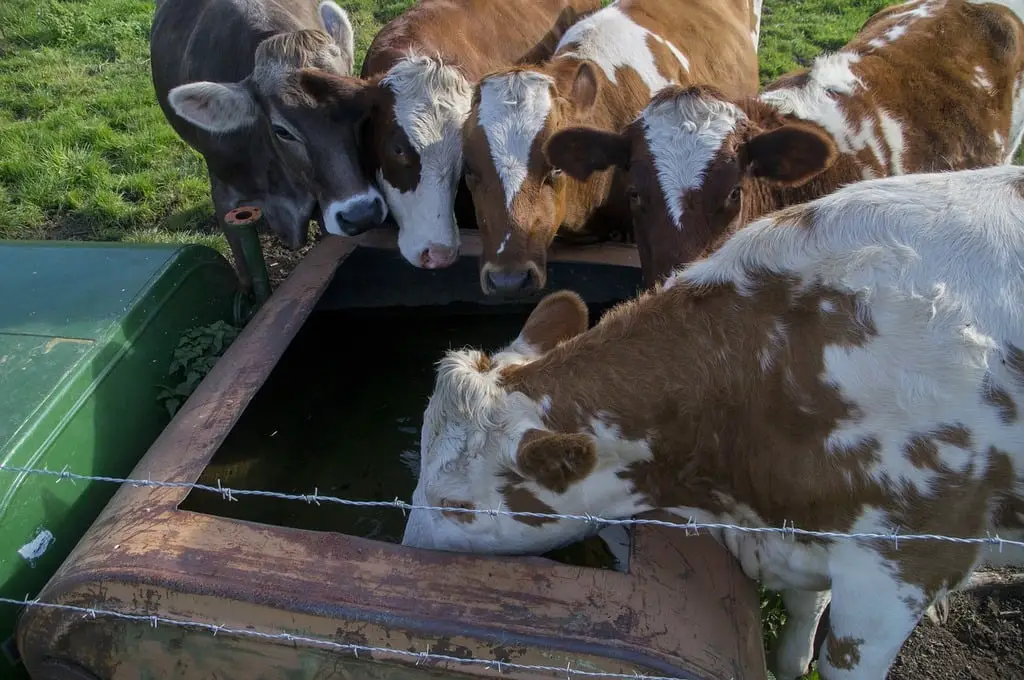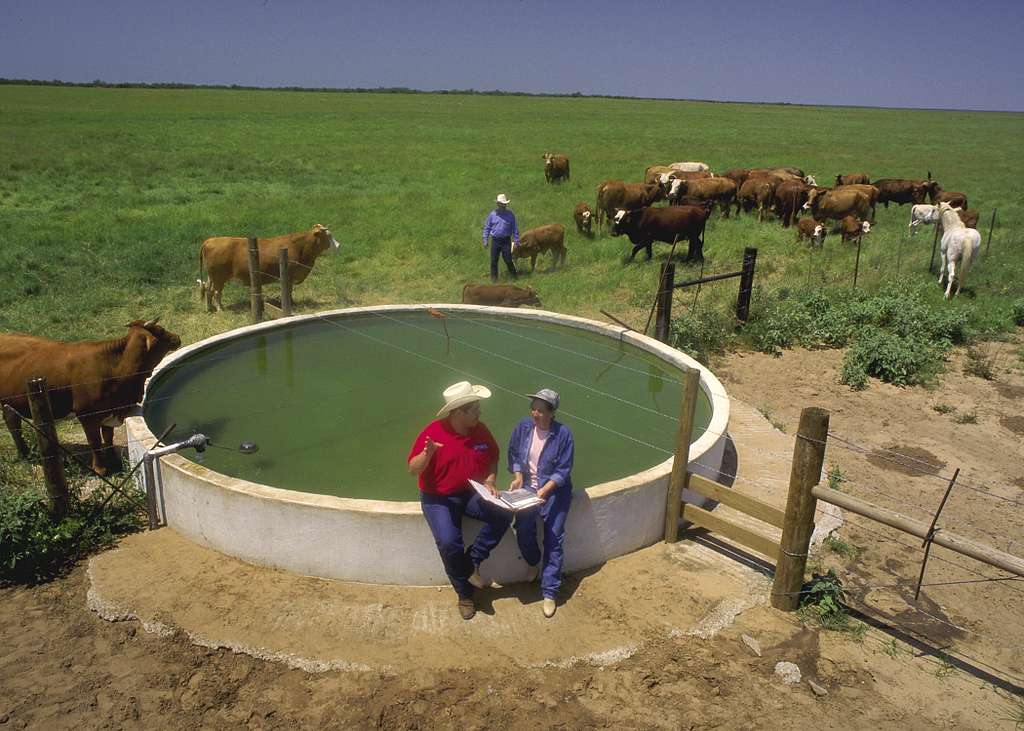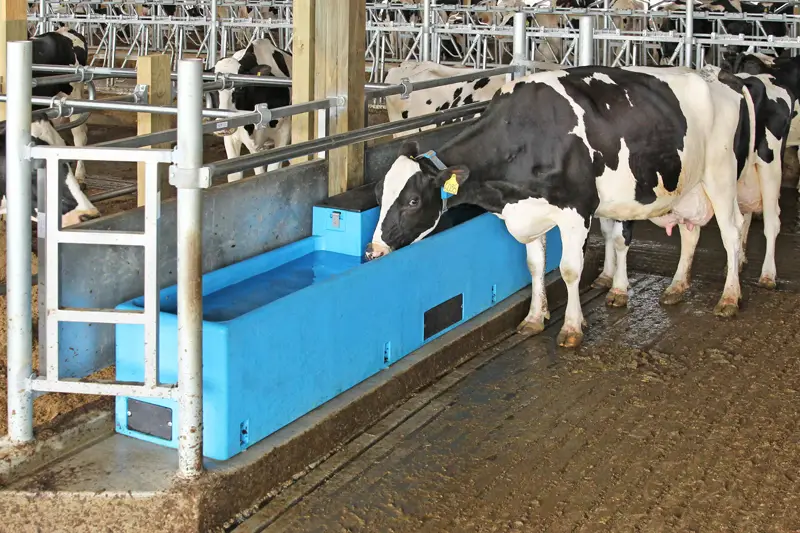
Cattle Watering! Think of water as the lifeblood of your cattle operation. It’s not just about keeping those troughs full – providing clean, accessible water is crucial for your herd’s health, productivity, and overall well-being. Whether you’re raising cattle in sun-baked Texas or the snowy plains of Montana, this guide will empower you to make smart cattle watering choices year-round.
Cattle Watering Basics
Let’s start with the essentials:
- More Than Just Wet: Water is vital for digestion, regulating body temperature, milk production, and keeping those vital organs humming along.
- Gulp It Up: Cattle can drink a surprising amount! Depending on their size, weather, and feed type, they may guzzle anywhere from 10-30 gallons a day.
- Don’t Skimp on Quality: Cattle can be picky drinkers! Dirty, foul-smelling water can make them drink less, impacting their health. Regular testing is key, especially if using well water.
Cattle Watering Systems: Your Options
Choosing the right system is like buying a good pair of boots – it depends on the terrain you’re covering!
- Tried and True Troughs: Pros: Variety of sizes, materials (metal, plastic, concrete). Cons: Can get dirty quickly, labor-intensive to fill manually.
- Cattle Watering Tanks: Pros: Hold larger volumes, good for bigger herds. Cons: Often fixed in place.
- Automatic Cattle Watering Systems: Pros: Labor-saving, maintain consistent water levels. Cons: Higher upfront cost, may need electricity or reliable gravity flow.
- Pasture Pipelines: Good for distributing water across large areas, but require planning and installation.
Solar Cattle Watering Systems: Harnessing the Sun
Looking to go off-grid or green up your operation?
- How They Work: Solar panels power a pump, pushing water into a storage tank for cattle access.
- The Sunny Side: Pros: No electricity needed, can be placed in remote pastures. Cons: Higher initial investment, performance varies with sunlight availability.
Winter Cattle Watering: Beating the Freeze
Let’s talk frozen water woes! Here’s how to win the battle of the ice:
- Insulation is Your Friend: Wrap troughs/tanks to slow down freezing.
- Heaters: Choose tank heaters designed for livestock use and follow safety instructions.
- Break the Surface: Routinely break ice build-up several times a day.
- When Troughs Fail: During extreme cold, cattle can get some moisture from eating clean snow.

FAQ
Q: How to keep cattle water from freezing?
- Prevention is Key: Insulation (wrapped tanks/troughs), breaking ice regularly, or choosing freeze-resistant trough materials are all good practices.
- Heaters: Livestock-safe water heaters come in various types (submersible, floating, etc.). Choose based on your setup and power source.
- Alternative Sources: In extreme cold with limited options, cattle can get some moisture from eating clean snow. This is NOT a long-term solution!
Q: How long can cattle go without water?
- Ideal is Always: Cattle should have consistent access to fresh water. In hot weather, dehydration can occur quickly.
- Factors Matter: A mature cow in cool weather might last longer without water than a calf on a scorching day.
- Don’t Push It: While cattle have a large water reserve, going without for extended periods can lead to health problems.
Q: How much water do cattle drink per day?
- It Varies: A ballpark figure is 10-30 gallons per day. However, this is influenced by the animal’s size, feed type, pregnancy status, and especially the weather.
Q: What size water trough for cattle?
- General Rule: Allow for 2-3 feet of trough space per mature cow. Consider the total herd size and how often you can refill the trough.
- Placement Matters: Having multiple water sources in a pasture can encourage more even intake.
Q: What is water belly in cattle?
- Urinary Blockage: This condition, primarily in males, is caused by mineral buildup obstructing urine flow. It’s serious and requires urgent veterinary attention.
- Prevention Focused: Balanced diets, access to clean water, and mineral supplements formulated to lower urinary pH can help reduce the risk.
Q: How much prolate/lintox per gallon of water for cattle?
- Caution: Seek veterinary guidance! Dosages depend on the specific deworming product, the type of parasite being targeted, and the animal’s weight. Improper use can be harmful.
Tips for Cattle Watering Success
Think of these as your water wings for hassle-free hydration:
- Strategic Placement: Put water sources in easily accessible, shady areas if possible.
- Keep it Clean: Regular cleaning of tanks and troughs prevents algae buildup and keeps the water appealing to your herd.
- Winter Plan: Don’t get caught off-guard! Have a plan in place for keeping water flowing when temperatures plummet.
- Observe and Adapt: Pay attention to your cattle’s drinking habits – it can tell you a lot about their health and if your water system is meeting their needs.
Beyond the Basics: Advanced Cattle Watering Considerations
- Water on the Move: For rotational grazing, portable troughs and quick-connect water lines are game-changers.
- Untapped Sources: Ponds, streams, or rainwater collection can be options, but proper management and water quality testing are crucial.
- Monitor for Leaks: A small leak can waste a surprising amount of water over time.

Conclusion
Providing optimal cattle watering isn’t rocket science, but it does take some thoughtful planning. By understanding your herd’s needs, exploring the different systems, and adapting to the seasons, you’ll ensure your cattle always have the life-giving water they need to thrive. Remember, a well-hydrated herd is a happy – and productive – herd!
